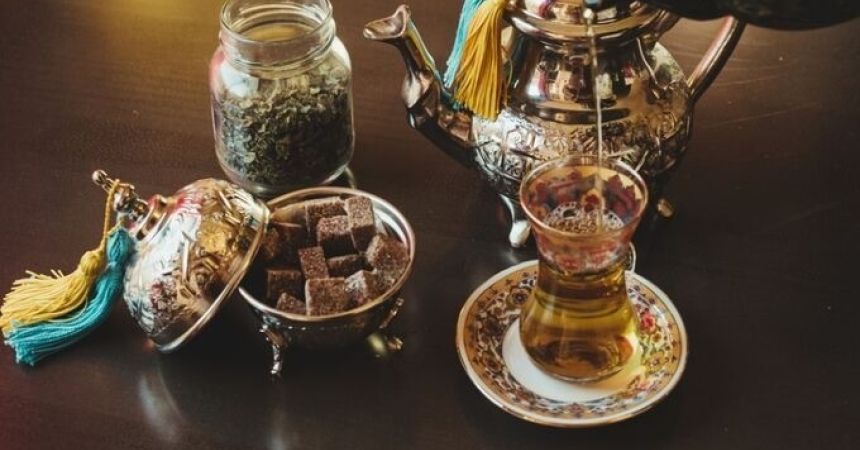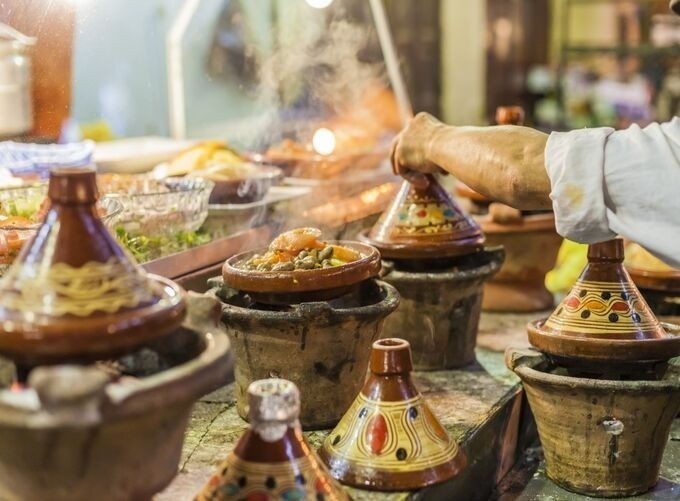
A Taste of Morocco
Moroccan cuisine is a vibrant tapestry woven from the country’s diverse cultures, geography, and history. From the bustling markets of Marrakech to the coastal cities of Essaouira and Tangier, the flavors of Morocco are as rich and varied as its landscapes. In this culinary journey, we will explore the essential elements of Moroccan cuisine, iconic dishes you must try, and the cultural significance behind each bite. Join us as we delve into the aromatic spices, fresh ingredients, and traditional cooking methods that make Moroccan food Trip a truly unforgettable experience.
The Essence of Moroccan Cuisine
Cultural Influences
Moroccan cuisine is a blend of Berber, Arab, Mediterranean, and even French influences. This melting pot of cultures has resulted in a unique culinary identity characterized by bold flavors and colorful presentations. The use of spices, herbs, and local ingredients reflects the diverse landscapes of Morocco, from the mountains to the sea.
Key Ingredients
Moroccan cuisine relies on a variety of fresh and aromatic ingredients. Some staples include:
Spices: Cumin, coriander, cinnamon, saffron, paprika, and ras el hanout (a spice blend) are commonly used to flavor dishes.
Herbs: Fresh herbs like cilantro, parsley, and mint are integral to many recipes and often used as garnishes.
Grains: Couscous is a staple in Moroccan households, typically served with stews and vegetables.
Vegetables: Seasonal vegetables such as carrots, zucchini, eggplant, and tomatoes feature prominently in dishes.
Fruits: Dried fruits like apricots, dates, and raisins are often used in tagines and desserts.
Iconic Moroccan Dishes
2.1. Tagine
Overview
Tagine is not just a dish; it’s also the name of the conical clay pot used for cooking it. This slow-cooked stew is a cornerstone of Moroccan cuisine and can be made with various ingredients, including meat, vegetables, and spices.
Common Varieties
Chicken Tagine with Preserved Lemons and Olives: This fragrant dish features tender chicken cooked with preserved lemons, olives, and a blend of spices.
Lamb Tagine with Apricots: A delightful combination of sweet and savory, this tagine includes succulent lamb, dried apricots, almonds, and aromatic spices.
Cooking Method
The unique shape of the tagine allows steam to circulate, resulting in tender, flavorful dishes. The slow cooking process melds the ingredients’ flavors beautifully.
2.2. Couscous
Overview
Couscous is a traditional Moroccan dish made from steamed semolina wheat granules. It is often served as a base for stews, vegetables, and meats.
Serving Styles
Couscous is typically served on Fridays as a family meal, often topped with a rich stew made from lamb, chicken, or vegetables. It can also be served with a variety of sauces and garnishes, such as chickpeas and raisins.
Culinary Importance
Couscous is more than just a dish; it symbolizes family and community, often shared during gatherings and celebrations.
2.3. Pastilla
Overview
Pastilla, also known as bastilla, is a savory-sweet pie traditionally made with pigeon or chicken, layered with spices, and encased in flaky pastry.
Flavor Profile
The filling typically includes a mixture of spiced meat, almonds, and eggs, and is often dusted with powdered sugar and cinnamon before serving, creating a delightful contrast of flavors.
Culinary Tradition
Pastilla is often served during special occasions and celebrations, showcasing the intricate flavors and textures of Moroccan cuisine.
2.4. Harira
Overview
Harira is a traditional Moroccan soup made with tomatoes, lentils, chickpeas, and a variety of spices. It is a popular dish during Ramadan, served to break the fast.
Ingredients
The soup is typically flavored with fresh herbs, such as cilantro and parsley, and is often accompanied by dates and bread.
Culinary Significance
Harira represents warmth and hospitality in Moroccan culture, often shared among family and friends during special occasions.
2.5. Moroccan Salads
Overview
Moroccan salads are a delightful part of the culinary experience, featuring a variety of fresh vegetables and herbs.
Types of Salads
Zaalouk: A delicious cooked salad made from eggplant, tomatoes, garlic, and spices, served warm or at room temperature.
Taktouka: A spicy salad made from roasted peppers and tomatoes, garnished with olive oil and spices.
Culinary Importance
Salads play an essential role in Moroccan meals, providing refreshing contrasts to the rich flavors of tagines and other dishes.
The Art of Moroccan Spices
Spice Blends
Moroccan cuisine is characterized by its use of aromatic spices, often blended together to create unique flavor profiles. The most famous blend is ras el hanout, which can contain a mix of over 30 different spices, including cumin, coriander, cinnamon, ginger, and allspice.
Culinary Techniques
Understanding the art of spice blending is key to mastering Moroccan cooking. Spices are typically toasted to release their essential oils, enhancing their flavors. This technique is often used in tagines and stews, allowing the spices to infuse into the dish.

Sweet Delights: Moroccan Pastries and Desserts
4.1. Baklava
Overview
Baklava is a beloved sweet pastry made from layers of filo dough filled with nuts and sweetened with honey or syrup.
Flavor Profile
The combination of nuts, cinnamon, and honey creates a delightful blend of flavors and textures.
4.2. Chebakia
Overview
Chebakia is a traditional Moroccan cookie made from dough shaped into a flower, deep-fried, and coated in honey and sesame seeds.
Culinary Tradition
Chebakia is often served during Ramadan and special occasions, symbolizing celebration and community.
4.3. Mint Tea
Overview
Moroccan mint tea, also known as Moroccan whiskey, is an essential part of the culture and is served to guests as a sign of hospitality.
Preparation
The tea is made with green tea, fresh mint leaves, and sugar. The pouring method is an art in itself, often involving a dramatic height to create a frothy top.
Culinary Significance
Mint tea represents friendship and hospitality, often enjoyed during conversations with friends and family.
Food Markets and Street Food Culture
Overview
Exploring Moroccan food markets and street food is an essential part of experiencing the country’s culinary landscape. The sights, sounds, and smells of bustling markets provide a sensory overload that captures the heart of Moroccan culture.
Must-Visit Markets in Morocco
Marrakech Souks: The vibrant souks of Marrakech are a feast for the senses. Here, you’ll find spices, dried fruits, nuts, and local delicacies. Don’t miss the Souk Semmarine for traditional Moroccan handicrafts.
Fes el-Bali: The ancient medina of Fes offers a maze of narrow streets filled with shops selling spices, textiles, and pottery. Explore the market stalls for unique souvenirs.
Street Food Delicacies
Briouat: These savory pastries filled with meat or cheese and fried to perfection are a popular street food snack.
Kebabs: Grilled meat skewers are widely available from street vendors, often marinated in flavorful spices.
Culinary Experiences: Cooking Classes and Food Tours
Cooking Classes
Participating in a cooking class is a fantastic way to immerse yourself in Moroccan cuisine. Many local chefs offer classes that teach you how to prepare traditional dishes, from tagines to pastries.
Food Tours
Joining a food tour can enhance your culinary journey. Local guides will take you through markets, introduce you to street food vendors, and share stories about the history and culture behind the dishes.
Recommended Experiences
Moroccan Cooking Class in Marrakech: Learn to cook traditional dishes using fresh, local ingredients.
Street Food Tour in Fes: Sample a variety of street foods while exploring the vibrant medina.
The Cultural Significance of Moroccan Cuisine
Family and Community
Moroccan cuisine is deeply rooted in family and community. Meals are often shared, bringing families and friends together to celebrate special occasions. Traditional dishes like couscous and tagine are typically served during communal gatherings.
Festivals and Celebrations in Morocco
Food plays a significant role in Moroccan festivals and celebrations. During Ramadan, families prepare special meals to break their fast, and weddings feature lavish feasts showcasing the best of Moroccan cuisine.
Hospitality
Moroccan culture places great importance on hospitality. Offering food and tea to guests is a sign of respect and friendship. The ritual of sharing mint tea symbolizes warmth and connection, making it a cherished aspect of Moroccan culture.
Savoring the Flavors of Morocco
A culinary journey through Morocco is an exploration of its rich flavors, vibrant colors, and warm hospitality. From the aromatic spices and hearty tagines to the sweet pastries and refreshing mint tea, Moroccan cuisine offers a unique blend of tastes that reflect the country’s diverse cultural heritage.
As you travel through Morocco, take the time to savor the local dishes, engage with the friendly vendors, and learn about the traditions that shape this incredible cuisine. Whether you’re enjoying a meal in a bustling souk, participating in a cooking class, or sipping mint tea with locals, each experience will deepen your appreciation for the rich culinary landscape of Morocco.



